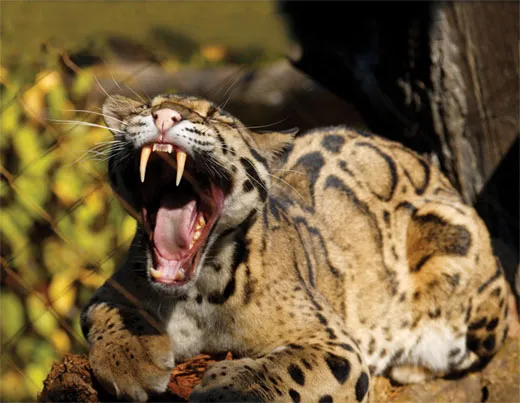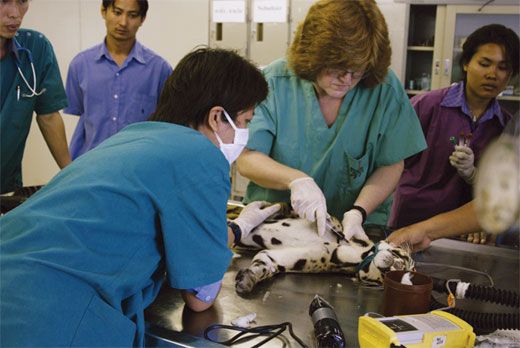Clouded comeback?
Smithsonian zoologists are attempting to breed the rare clouded leopard
/https://tf-cmsv2-smithsonianmag-media.s3.amazonaws.com/filer/mall-leopard-388.jpg)
In one respect, it has been a good year for the clouded leopard, a strange and beautiful Asian cat. Fifteen cubs, 12 of which survived, were born at the Khao Kheow Open Zoo in Chonburi, Thailand, offspring of a collaboration with the Smithsonian's National Zoo.
The births were part of an initiative to ensure the survival of the clouded leopard, which is endangered in the wild and, in that respect, had another bad year. Deforestation is not only destroying the arboreal feline's habitat, across Southern Asia from Nepal to Borneo, but also isolating populations, causing inbreeding that can harm the health of offspring and lower their reproductive success. Even in wilderness preserves, poachers kill cloudeds, hoping to pass off their pelts as tiger skins or sell the bones for use in traditional Chinese remedies. Researchers estimate that only 5,000 to 10,000 clouded leopards remain in the wild.
Though its spots are indeed cloud-shaped, the animal is only a cousin of the leopard (Panthera pardus). In fact, the clouded leopard has its own genus (Neofelis). It also has the longest tail for its size of all the felids, and its canine teeth are so long that it was once thought to be a descendant of the saber-toothed tiger. (It isn't.) It's exceptionally acrobatic, even for a cat; its rotating rear ankles allow the animal to sprint down a tree trunk like a squirrel.
Much of what scientists know about breeding the animal in captivity they learned at the Smithsonian National Zoo's Conservation and Research Center (CRC), a 3,200-acre facility that stretches along the foothills of the Blue Ridge Mountains in Front Royal, Virginia. One CRC building currently houses eight intensively studied cloudeds. "Of all the cats, nothing is as hard {to breed} as the clouded leopard," says JoGayle Howard, a reproductive physiologist with the National Zoo, who has bred cheetahs, pumas and tigers and had a hand in the birth of the Zoo's celebrated young panda, Tai Shan.
Artificial insemination, which has proved successful with several other mammal species, has yielded just one litter of clouded leopards in 25 years. Natural mating has been a challenge too; researchers have found that wild-born adult males often attack and kill potential mates.
But zookeepers, including the CRC's Kenneth Lang, put the skittish cats in taller enclosures with more logs to climb; moved them away from tigers, bears and other intimidating animals; enriched their diet; and introduced potential mates as cubs. Such measures calmed down the animals, according to stress and reproductive hormones in fecal samples analyzed by Howard, co-worker Katey Pelican and others. And fertility rates improved. Prior to 2002, when the CRC first teamed up with Thai zoos, no more than 5 clouded leopards had been born in captivity in Thailand; since then, 26 have been born, 22 of which survived.
It's not clear whether the researchers will attain the ultimate goal of breeding a sufficiently large and diverse population of clouded leopards to begin reintroducing them to depleted populations in the wild. But, says National Zoo spokesman John Gibbons, Howard and her co-workers have taken a key first step by "cracking the code of what makes a successful captive-breeding program."
/https://tf-cmsv2-smithsonianmag-media.s3.amazonaws.com/accounts/headshot/david-zax-240.jpg)


/https://tf-cmsv2-smithsonianmag-media.s3.amazonaws.com/accounts/headshot/david-zax-240.jpg)